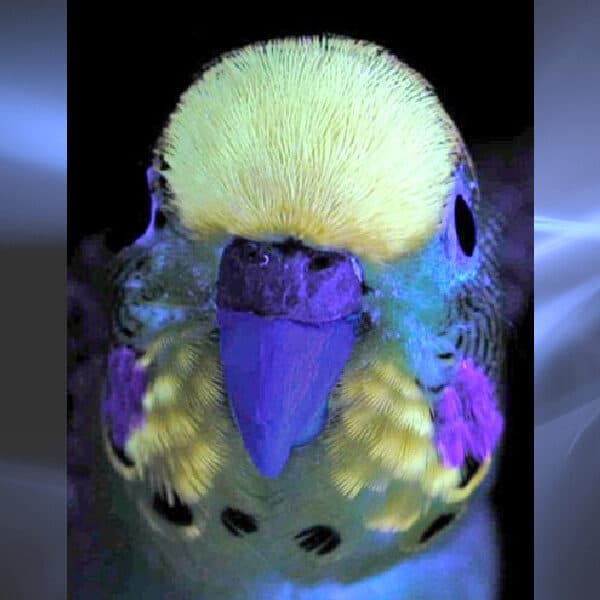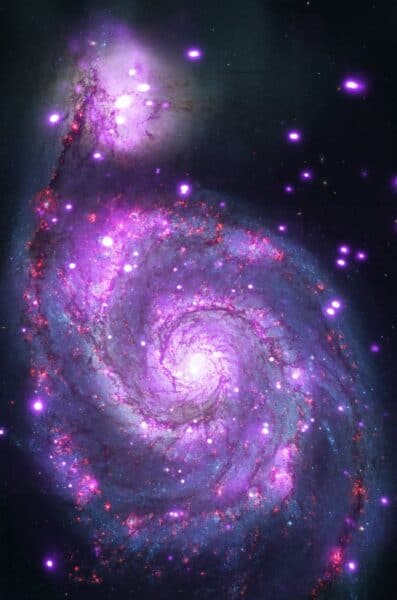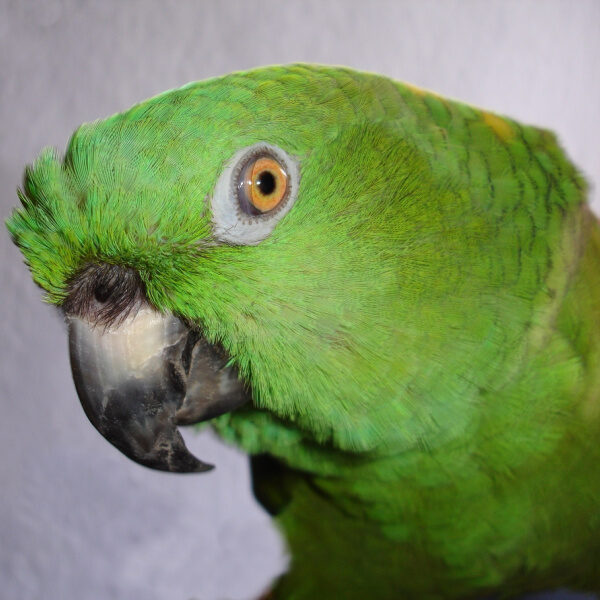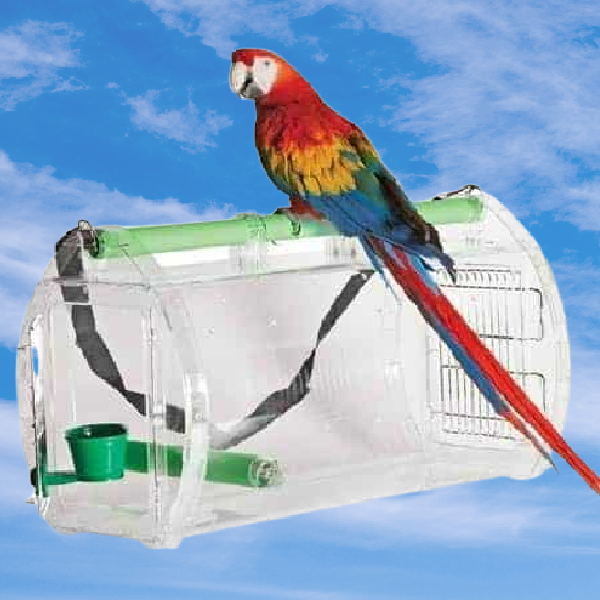Last Updated on by Mitch Rezman
Okay, that’s a bit of a stretch but if you could see what budgies see – not so much.
A couple of weeks ago we talked about not fully understanding the effects of ultraviolet lighting on our birds. Something that not a lot of us including myself fully understand.
Leave it to NASA to set the record straight on the correlation between parrots and the center of our galaxy. Admitted science geek that I am, lots of interesting content cross my desktop daily.
Budgie feathers and ultraviolet (UV) light have an interesting relationship. Budgie feathers have the ability to reflect UV light, which is invisible to the human eye, but visible to birds.
In the wild, many birds, including budgies, use UV reflection as a means of communication and mate selection. The brightness of a bird’s UV reflection is linked to their overall health, and birds with brighter UV reflections are seen as more attractive to potential mates.
Additionally, budgies use UV reflection to navigate their environment. UV light is abundant in the natural world, and birds can use it to identify landmarks and find food sources.
In captivity, the use of UV lighting is important for the health and well-being of budgies. UV lighting provides the necessary UV radiation for vitamin D synthesis, which is essential for the absorption of calcium and overall bone health. Lack of UV lighting can lead to health problems such as metabolic bone disease.
In summary, budgie feathers have the ability to reflect UV light, which is important for communication, navigation, and overall health.
Rummaging through the archives of Science Magazine there’s an article from January 2002 entitled ”Fluorescent Signaling in Parrots” by Katherine Arnold At the University of Glasgow.

About a week later in the Journal of Nature, you’ll find reports on the fluorescence that has been seen in the Galactic Center in an article by astronomer Q Daniel Wayne of the University of Massachusetts, Amherst.
The first article explains how ultraviolet light is absorbed by budgies (as well as other parrots) feathers on the crown and the cheeks and then the light gets re-emitted – as yellow light which is a longer wavelength.
Figure 1. Budgerigar’s head (A) under white light and (B) under UV illumination to induce yellow fluorescence. (C) Crown irradiated with UV light only (dashed line), resulting in human-visible fluorescent emission (solid line). (D) Normalized visual difference between the emission spectrum of plumage, measured as radiant emission from feathers (solid line) and the spectral sensitivities of the four single cones classes of the budgerigar’s retina (dashed lines) (4). (Credit: K.Arnold et al., Science, 295, 92)
Basically what Ms. Arnold found was that both boy and girl budgies used the fluorescence of birds of the opposite sex and their glowing feathers that fluoresced in a light spectrum range that neither you nor I can see as an indicator for the quality of a possible mate.
Going back to the second story the geeky science astronomer guys and gals using pics that mere mortals have no access to because they have the Chandra X-ray Observatory to play with and made really cool images of the Milky Way Check it out!

This Chandra image exposes a wealth of exotic objects and high-energy features at the center of our galaxy, the Milky Way. In this new and deep image from Chandra, red represents lower-energy X-rays, green shows the medium range, and blue indicates the higher-energy X-rays.
Hundreds of small dots show emissions from material around black holes, neutron stars, and white dwarfs. A supermassive black hole — some four million times more massive than the Sun — resides within the bright, blue-white region on the right.
The diffuse X-ray light comes from gas heated to millions of degrees by outflows from the supermassive black hole, winds from giant stars, and stellar explosions.
This 400 by 900 light-year mosaic of several Chandra images of the central region of our Milky Way galaxy reveals hundreds of white dwarf stars, neutron stars, and black holes bathed in an incandescent fog of multimillion-degree gas.
The supermassive black hole at the center of the Galaxy is located inside the bright white patch in the center of the image. The colors indicate X-ray energy bands – red (low), green (medium), and blue (high).
Now that I’ve got you spun around scientifically, what the science guys and gals are saying is, forgetting fluorescence from parrot feathers for a moment, if you look at iron atoms that happen to take up a really big portion of the Milky Way galaxy (see image above), this fluorescence happens when – following x-rays that bump into electrons knocking said electrons out of the insides of the iron atoms which somehow excites the atoms so much so they produce more energy.
Fluorescent suits are NOT chick magnets – you’ve been warned
Rounding third base here: The atoms calm down emitting a fluorescent x-ray which is a longer wavelength and is basically the same process that causes budgies to glow fluorescently (I think I made that word up) in the eyes of other budgies.
caveat:
Some people are able to reflect the light that lands on them, to take directions or assets or energy and focus it where it needs to be focused. This is a really valuable skill.
Even more valuable, though, is the person who glows in the dark. Not reflecting energy, but creating it. Not redirecting urgencies but generating them. The glow in the dark colleague is able to restart momentum, even when everyone else is ready to give up.
At the other end of the spectrum (ahem) is the black hole. All the energy and all the urgency merely disappears.
Your glow-in-the-dark colleague knows that recharging is eventually necessary, but for now, it’s okay that there’s not a lot of light. The glow is enough. Seth Godin
Written by Mitch Rezman
Approved by Catherine Tobsing
Your Zygodactyl Footnote
No inventory of budgies in space videos so we’re going with our favorite animal in space video ~ cats
Author Profile
Latest entries
 The Traveling BirdJune 26, 2025Can You Name 5 Parrot Species That Are Living Wild in the USA?
The Traveling BirdJune 26, 2025Can You Name 5 Parrot Species That Are Living Wild in the USA? Bird BehaviorJune 26, 2025How is it Parrots Are Problem Solvers Social Animals and Even Use Tools?
Bird BehaviorJune 26, 2025How is it Parrots Are Problem Solvers Social Animals and Even Use Tools? Bird & Parrot AnatomyJune 25, 2025How a Tiny Chemical Modification Makes Parrots Nature’s Living Paintings
Bird & Parrot AnatomyJune 25, 2025How a Tiny Chemical Modification Makes Parrots Nature’s Living Paintings PigeonsJune 20, 2025How Do Parrots Thrive in Cities Outside Their Native Habitats?
PigeonsJune 20, 2025How Do Parrots Thrive in Cities Outside Their Native Habitats?




